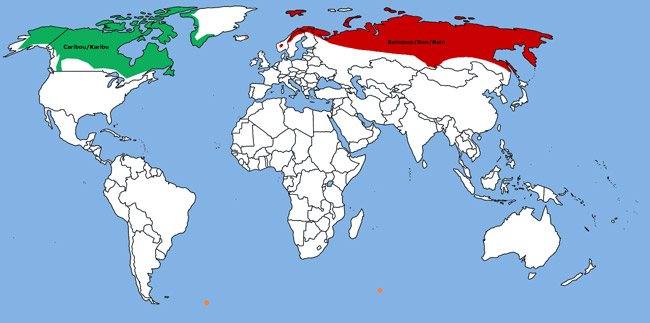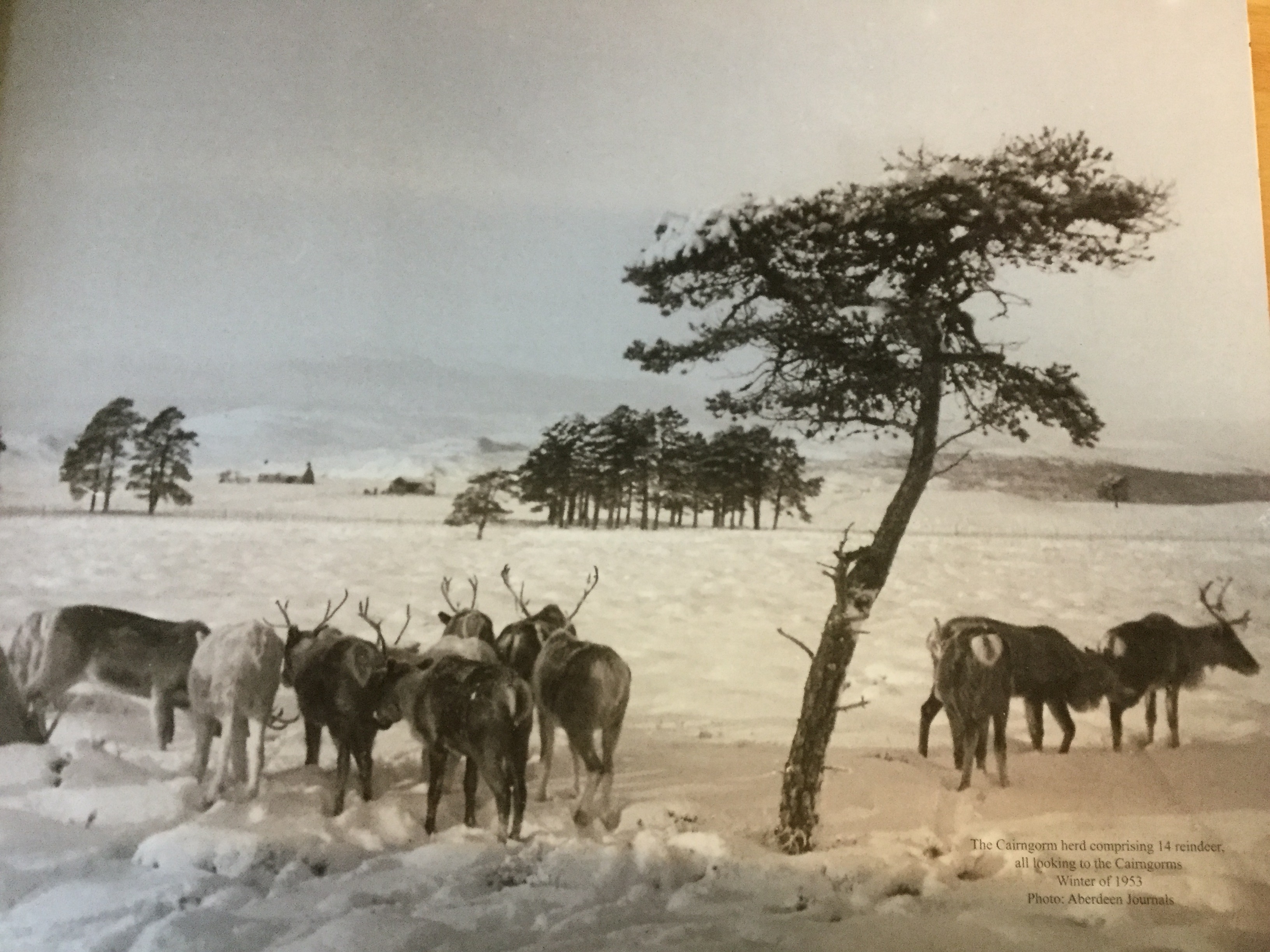Here at the Reindeer Centre we spend much of our time working with reindeer and teaching people about them. It therefore came as a surprise to many of us how much reindeer taxonomy we didn’t know! Because of this, I’ve put together a blog to teach everyone all they need to know about where our reindeer come from and who they are related to..
Reindeer (and Caribou) are members of the Deer family, Cervidae. Their latin/scientific name is Rangifer tarandus and there are a number of different types or subspecies which are geographically spread across the Arctic and sub-Arctic areas of the northern hemisphere.
Through these higher latitudes there is a huge range of different ecosystems from northern boreal forest and tundra on the mainland to the far north high arctic islands. Reindeer and Caribou occupy all of these areas.

In the New World, Alaska and North Canada, Rangifer tarandus is referred to as Caribou and these are completely wild animals that have never been domesticated by man. Broadly speaking there are Barren Ground Caribou (R.t groenlandicus), Alaskan Caribou (R.t.granti) and North American Woodland Caribou (R.t caribou). The Barren Ground Caribou are famous for the annual migration of massive herds from the forest to the arctic ocean whereas the North American Woodland Caribou live close to or in the boreal forest are often secretive and hard to find. They are locally known as ‘the grey ghosts of the forest’.


In the Old World, North Scandinavia, Russia and Siberia, these same animals are called Reindeer and here there are both wild and domesticated herds. The domestic herds far outnumber the wild herds in all areas. There are two sub-species: Eurasian Tundra Reindeer (R.t.tarandus) and Eurasian Forest Reindeer (R.t.fennicus). As their names suggest the tundra reindeer belong to the more northern areas of Russia and Scandinavia and the Forest reindeer are found only in the Russia taiga, or northern boreal forest.
In the high Arctic there are two island living subspecies of Rangifer tarandus Peary Caribou (R.t.pearyi) who are restricted to the high arctic Queen Elizabeth Islands of arctic Canada and Svalbard Reindeer (R.t.platyrhynchus), from the Norwegian owned islands of Spitzbergen. The high arctic island reindeer, like the North American Caribou have never been domesticated.
Antler shape has been used to split the genus Rangifer into two main groups. The group Cylindricornis have antler beams which are rounded in cross section and they occur in the tundra and mountain environments. The second group, Compressicornis, have flattened antler beams and are generally found in forests and woodlands.
So what are our Scottish reindeer? Our reindeer originate from Swedish Lapland and so are Rangifer tarandus tarandus and they fall into the Cylindricornis group, as described above. All reindeer in Swedish Lapland are domesticated and have been for a few hundred years. There have been various introductions into the herd, all from Scandinavia except for a bull Kivi who was from Russian and Finnish lineage. He was a prolific breeding bull who fathered a large number of calves in the 1970’s. So today our Scottish-bred herd of reindeer have a fair amount of Russian blood in them too.


It has been 65 years since the reindeer came to Scotland and undoubtedly in that time they have ‘adapted’ to their windswept Cairngorm environment. Maybe sometime in the future we will have our very own ‘sub-species’ Rangifer tarandus scotica’…?
This blog has been written using information from the following two books:
The Real Rudolph. A Natural History of the Reindeer by Tilly Smith (out of print but still available on Amazon)
Hoofprints. Sixty years of reindeer on the Cairngorms by Emily Singleton (still in print and available from the Cairngorm Reindeer Centre)
Tilly
